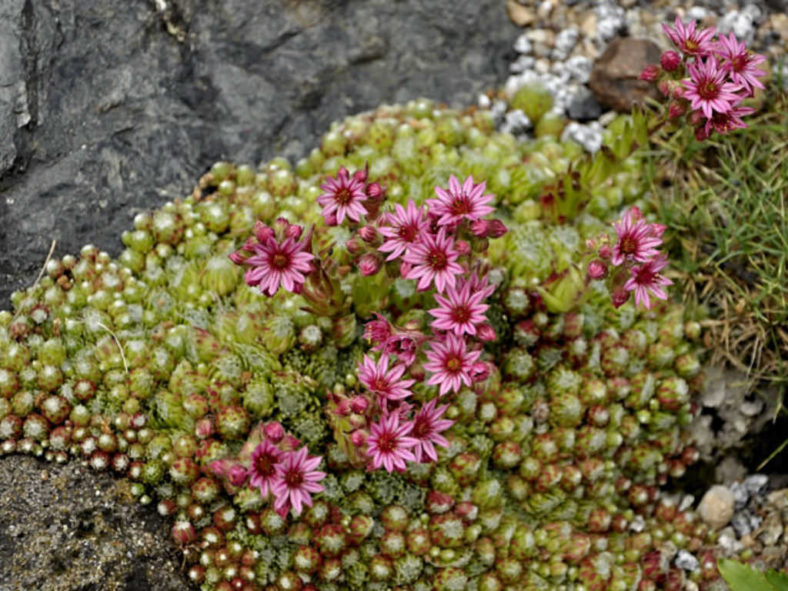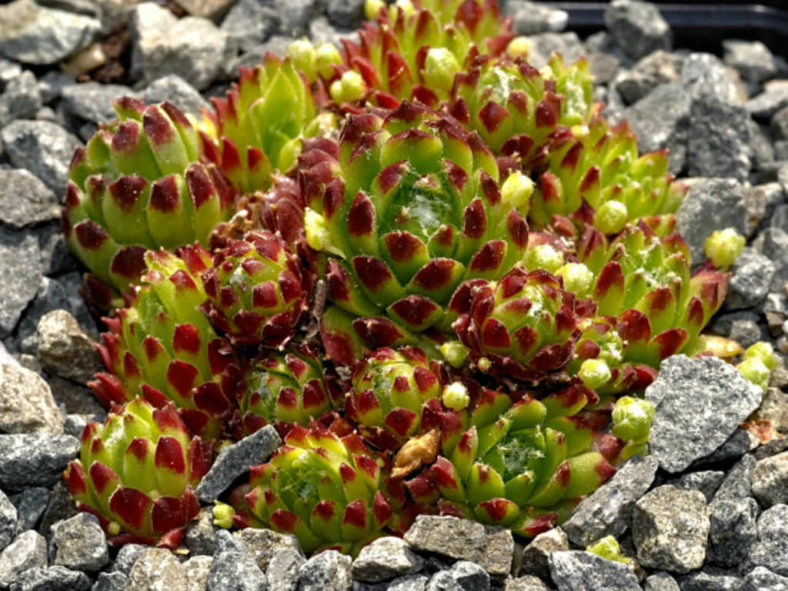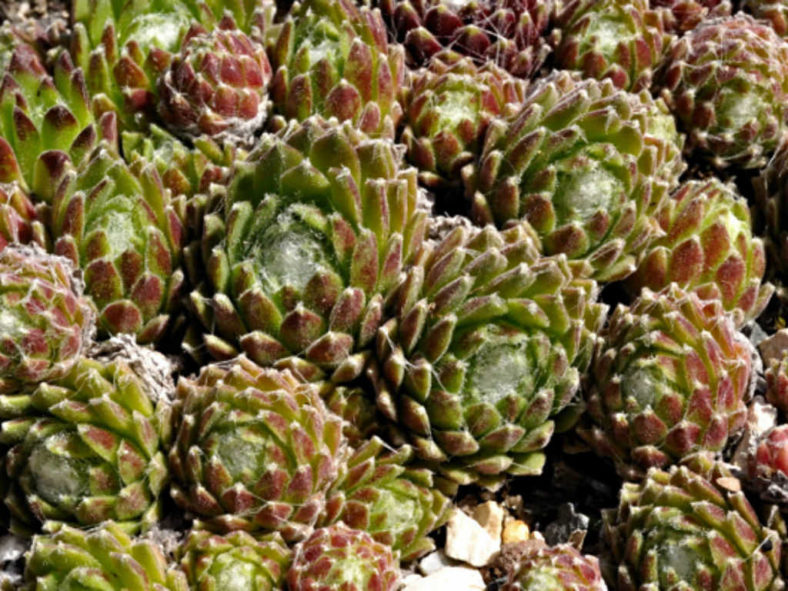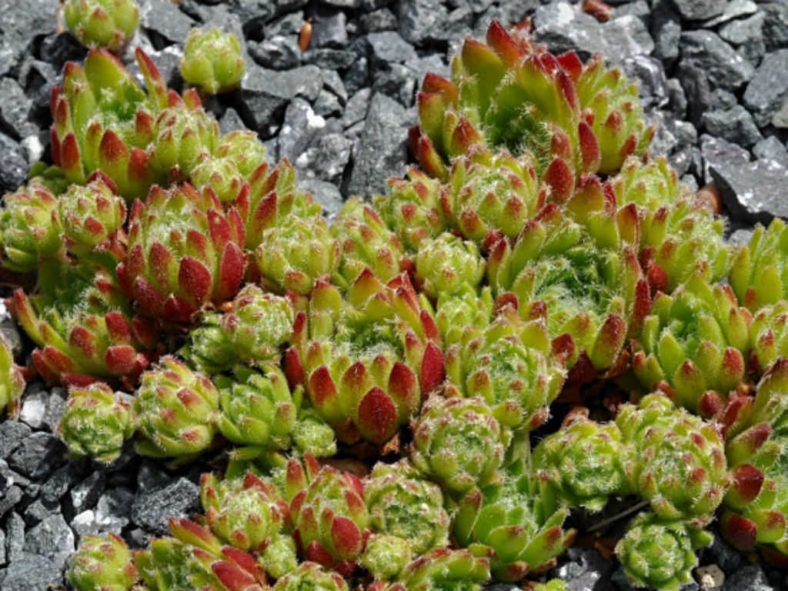Scientific Name
Sempervivum ×barbulatum Schott
Common Name(s)
Hen and Chicks, Houseleek
Synonym(s)
Sempervivum barbatulum, Sempervivum barbulatum, Sempervivum ×dolomiticum, Sempervivum ×hookeri
Scientific Classification
Family: Crassulaceae
Subfamily: Sedoideae
Tribe: Sedeae
Subtribe: Sedinae
Genus: Sempervivum
Origin
Sempervivum ×barbulatum is a natural hybrid resulting from a cross between Sempervivum arachnoideum and Sempervivum montanum. It is native to the Alps, Pyrenees, Corsica, and Apennines, wherever its parents co-occur.
Description
Sempervivum ×barbulatum is a succulent plant with a mat-forming habit. It has small rosettes of obovate, green leaves tipped with woolly hairs. The rosettes can reach a diameter of 1.2 inches (3 cm) and produce offsets on short bare stems.
In summer, the mature rosettes produce an erect stalk clothed with rather larger, similar leaves, bearing cymes of purplish-rose, many-stellate flowers. The flower stalk can grow up to 2 inches (5 cm) tall.

Hardiness
USDA hardiness zone 4a to 9b: from -30°F (-34.4°C) to 25°F (-3.9°C).
How to Grow and Care
Sempervivums are not difficult to grow, provided they are not waterlogged and killed by excess watering. They can be easily grown outdoors and in containers, and they earned the name "Houseleeks" from their tendency to root on the roofs of houses. After the mother plant flowers, it will naturally die, but the plant has likely produced many offsets that will continue to grow by this time. These are excellent for cold windows. Sempervivum earned its popular name "Hen and Chicks" from their growth habit. The mother plant, or hen, sends off numerous offsets clustered around her base like chicks. These offsets can be easily repotted, or the plants can be left to form a clumping mat.
Repot as needed, preferably during the warm season. To repot a succulent, ensure the soil is dry before repotting, then gently remove the pot. Knock away the old soil from the roots, removing any rotted or dead roots. Treat any cuts with a fungicide. Place the plant in its new pot and backfill with potting soil, spreading the roots as you repot. Leave the plant dry for a week or so, then water lightly to reduce the risk of root rot.
See more at How to Grow and Care for Sempervivum.
Cultivars
Links
- Back to genus Sempervivum
- Succupedia: Browse succulents by Scientific Name, Common Name, Genus, Family, USDA Hardiness Zone, Origin, or cacti by Genus
Photo Gallery
Click on a photo to see a larger version.


